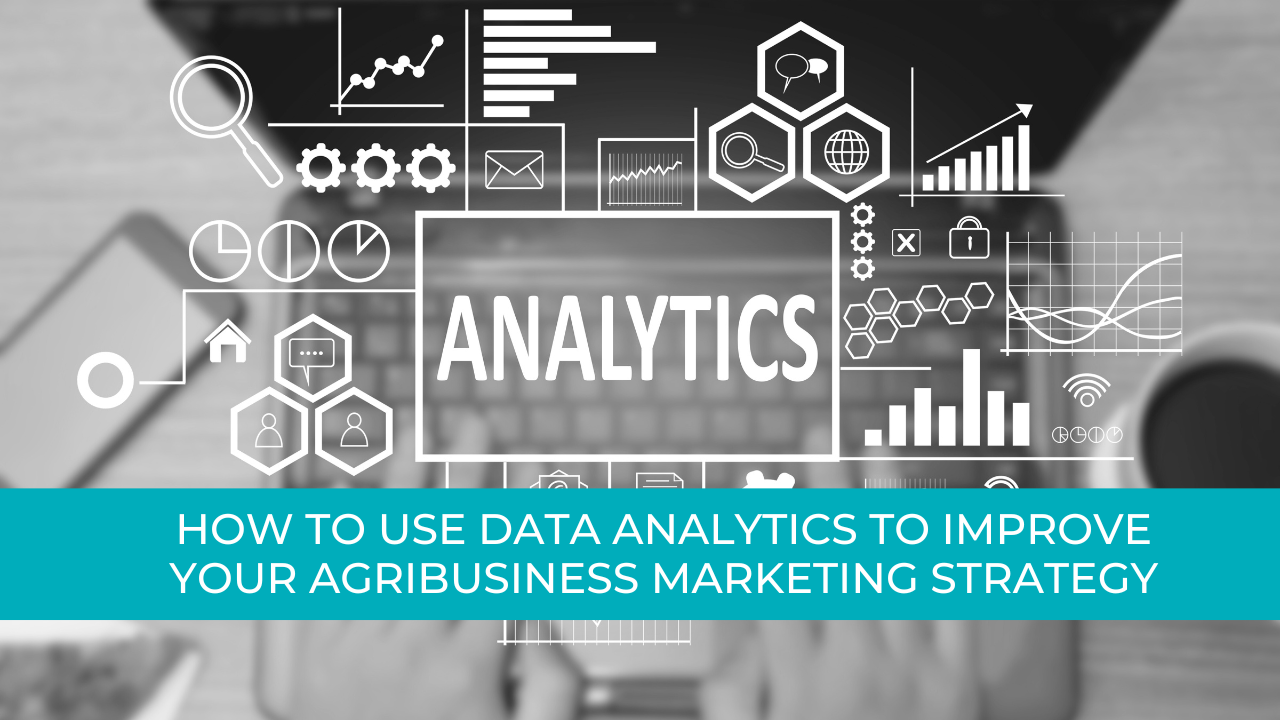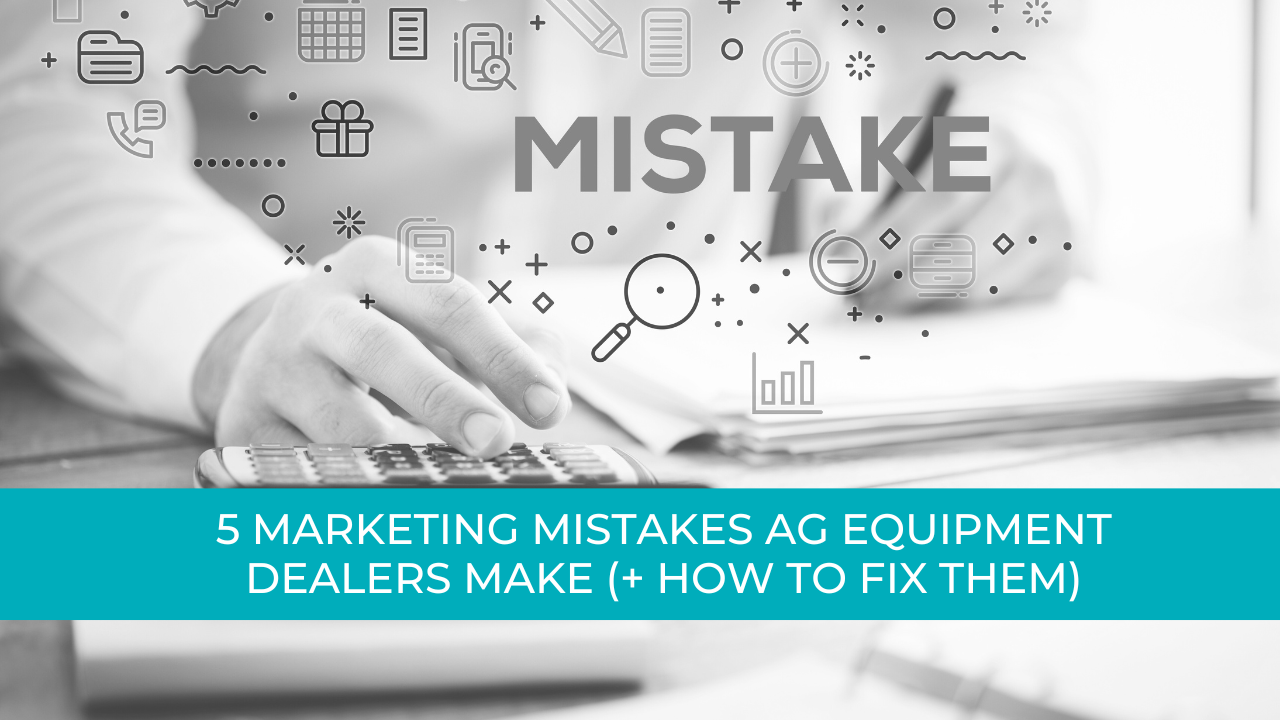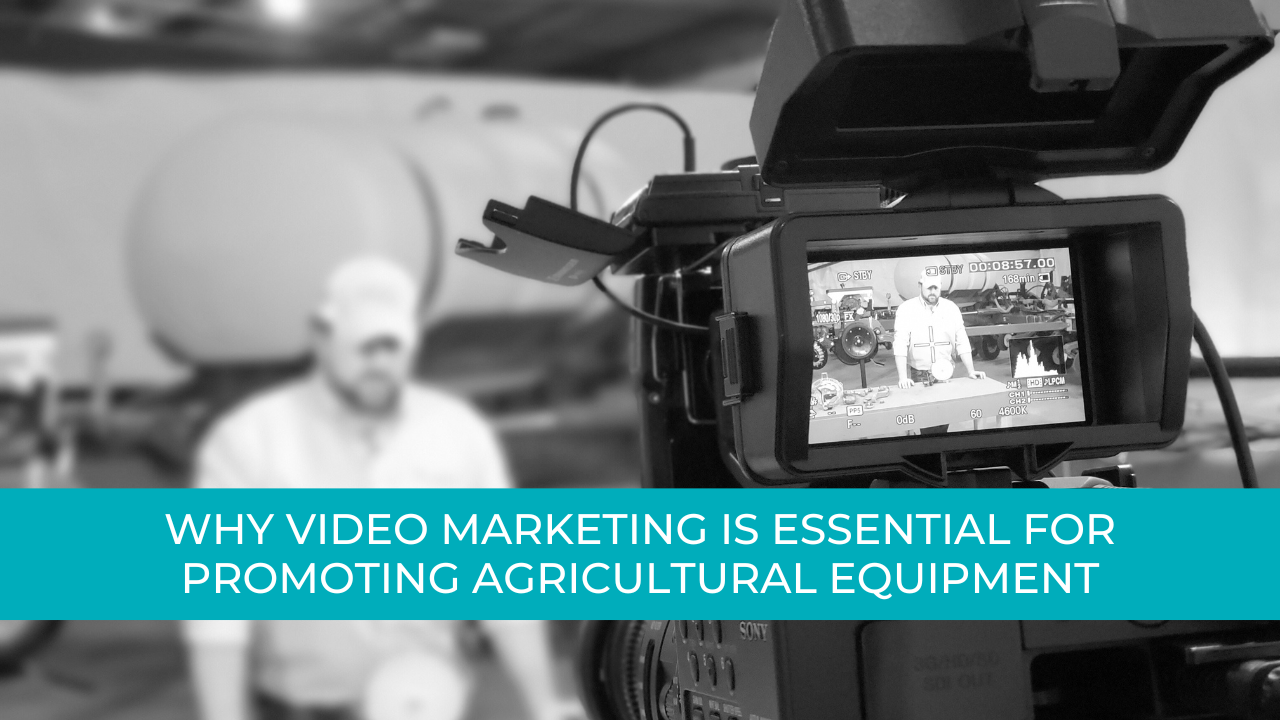Agtivation Blog
What's New In The Digital Ag World
Employing AI for Competitive Analysis in Agriculture
Imagine traversing a vast field without knowing where the best crops grow. This is what businesses face without competitive analysis in agriculture. By employing AI, you can turn that uncertainty into clarity, spotting market trends and competitor strategies with precision. But how do you gather and analyze this data effectively? The answer could change the way you approach your agricultural strategy, leading to smarter decisions and better outcomes.

Key Takeaways
- AI enhances competitive analysis by swiftly identifying market trends and competitor strategies, allowing for proactive adjustments in tactics.
- Predictive analytics powered by AI forecasts consumer behaviors and market shifts, helping businesses stay ahead of emerging competitors.
- AI tools analyze vast data sets to uncover unique strengths and weaknesses, refining market positioning effectively.
- Utilizing AI for risk assessments helps identify supply chain vulnerabilities, ensuring better strategic planning and resource optimization.
- Engaging AI in social media monitoring provides insights into customer feedback and competitor activities, informing better marketing strategies.
Understanding Competitive Analysis in Agriculture
When you plunge into competitive analysis in agriculture, you're taking an important step to understand your market better. By examining the competitive landscape, you'll identify who your rivals are and how they're positioning themselves. This insight helps you determine your unique strengths and weaknesses. You can then refine your market positioning to stand out in a crowded field.
Look at factors like pricing, product offerings, and customer engagement strategies. By understanding what works for your competitors and what doesn't, you can make informed decisions to improve your own tactics. Ultimately, this analysis empowers you to craft strategies that elevate your business, ensuring you're not just another player in the market but a leader.
The Role of AI in Modern Agriculture
AI is changing the way you understand market trends in agriculture, making it easier to spot shifts before they happen. It helps you identify your competitors' strategies, giving you an edge in your planning. With AI, enhancing your decision-making process becomes a lot more straightforward and informed.
Understanding Market Trends
In today's fast-paced world, understanding market trends is essential for staying competitive in agriculture. With the help of AI, you can conduct effective market analysis that reveals shifts in consumer preferences, pricing strategies, and emerging opportunities. The technology impact of AI allows you to gather and analyze vast amounts of data quickly, giving you insights that were once hard to obtain. This means you can make informed decisions based on real-time information rather than relying solely on intuition. By keeping your finger on the pulse of market trends, you'll be better positioned to adapt your strategies, optimize your resources, and ultimately enhance your business's performance in a constantly evolving agricultural landscape.
Identifying Competitor Strategies
Understanding what your competitors are doing can give you a significant edge in the agricultural market. With AI, you can analyze the competitive landscape more effectively, spotting trends and strategies that others are using. This technology helps you gather data on competitor pricing, product offerings, and marketing tactics, allowing you to adapt your own strategy accordingly. By keeping an eye on these elements, you can identify gaps in the market and capitalize on opportunities that your competitors might overlook. Strategy adaptation becomes seamless, as AI provides real-time insights that inform your decisions. Embracing these tools not only strengthens your position but also fosters innovation in your agricultural business. Stay ahead by leveraging AI for competitor analysis.
Enhancing Decision-Making Processes
When it comes to running an agricultural business, making informed decisions is essential for success. AI can greatly enhance your decision-making processes by leveraging data visualization and predictive analytics. With data visualization, you can easily interpret complex data, spotting trends and patterns that help you understand market dynamics. Predictive analytics, on the other hand, allows you to forecast future outcomes based on historical data, enabling you to make proactive choices. By utilizing these AI tools, you can refine your strategies, minimize risks, and seize opportunities more effectively. Embracing AI not only streamlines your decision-making but also positions your business to respond quickly to changes in the agricultural landscape, ensuring you stay competitive in today's market.
Identifying Your Competitors
How do you know who your competitors are in the agriculture industry? First, you need to focus on competitor identification to understand your market positioning. Recognizing your competition helps you spot opportunities and threats in your niche. Here are three steps to identify your competitors:
- Research Local Farms and Businesses: Look at nearby agricultural entities that offer similar products or services.
- Analyze Online Presence: Check their websites and social media to see how they engage customers and promote their offerings.
- Monitor Industry Trends: Stay updated on market changes and emerging players that could impact your business.
Gathering Data on Competitors
While you may know who your competitors are, gathering data about them is essential for making informed decisions in your agricultural business. Start by identifying reliable data sources, such as industry reports, social media, and competitor websites. Look for information on their products, pricing, marketing strategies, and customer reviews. Creating detailed competitor profiles can help you understand their strengths and weaknesses. This way, you can spot opportunities to differentiate your business and improve your offerings. Don't forget to keep track of changes in their operations or marketing tactics, as this can provide insights into market trends. By systematically gathering and analyzing this data, you'll be better equipped to make strategic decisions for your agricultural business.
Analyzing Market Trends With AI
When you analyze market trends with AI, you're gaining valuable insights into how the agricultural landscape is shifting. This technology helps you understand market dynamics and spot competitor strategies, so you can make informed decisions. By leveraging AI, you can stay ahead and adapt to changes more effectively.
Understanding Market Dynamics
Understanding market dynamics is essential for agricultural businesses, especially as consumer preferences and environmental factors continuously change. By leveraging AI, you can analyze trends and gain insights into market segmentation, helping you tailor your offerings to different consumer groups. Here are three ways AI can enhance your understanding of market dynamics:
- Predictive Analytics: Forecast future trends based on historical data.
- Consumer Behavior Analysis: Identify shifts in preferences and buying habits.
- Competitive Landscape Monitoring: Keep tabs on competitors while ensuring data privacy.
Identifying Competitor Strategies
How can you stay ahead in a competitive agricultural market? By leveraging AI for competitor analysis, you can gain valuable insights into your rivals' strategies. AI tools analyze data from various sources, helping you uncover trends in pricing, product offerings, and marketing tactics. This information allows you to refine your strategy development, ensuring you make informed decisions that resonate with your target audience. You can identify gaps in the market and capitalize on opportunities your competitors might miss. Additionally, monitoring your competitors' online presence helps you adapt your digital marketing efforts, keeping your brand relevant and appealing. In today's fast-paced agricultural landscape, staying informed about competitor strategies is essential for maintaining a competitive edge.
Utilizing AI Tools for Data Insights
As you explore ways to enhance your agricultural business, utilizing AI tools can reveal valuable data insights that help you make smarter decisions. By leveraging these tools, you can better navigate the competitive landscape and understand important trends. Here are three key benefits of using AI tools:
- Market Analysis: AI tools analyze vast amounts of data to provide insights on market trends and shifts in consumer behavior.
- Strategic Planning: With accurate data insights, you can develop effective strategies that align with industry benchmarks.
- Decision Support: AI tools help you make informed decisions, ensuring your actions are backed by reliable data.
Understanding Customer Preferences
What do your customers really want? To understand their preferences, you need to collect and analyze customer feedback. This practice is essential for tailoring your products and services to meet their needs. By conducting preference analysis, you can uncover patterns in what drives your customers' decisions. Are they looking for organic options, sustainable practices, or local sourcing? When you know their preferences, you can adjust your offerings and marketing strategies accordingly. Use surveys, reviews, and direct conversations to gather insights. This information helps you create a more personalized experience, enhancing customer satisfaction and loyalty. In the competitive agriculture landscape, understanding what your customers value can set you apart and drive your success.
Monitoring Social Media Activity
To stay ahead in the agriculture industry, you need to keep an eye on social media activity. Tracking brand mentions helps you understand how people perceive your business, while analyzing competitor strategies gives you insights into what works for others. Plus, looking at engagement trends can reveal what resonates with your audience, helping you refine your approach.
Tracking Brand Mentions
Keeping an eye on brand mentions across social media is essential for agricultural businesses looking to connect with their audience. By tracking these mentions, you can enhance your brand reputation and gather valuable customer feedback. Here are three key benefits of monitoring brand mentions:
- Identify Trends: Spot what customers are saying about your products or services and adapt accordingly.
- Engage Directly: Respond to comments or questions, showing your audience that you value their input and care about their needs.
- Manage Crises: Quickly address negative mentions before they escalate, protecting your brand's reputation in a competitive market.
Analyzing Competitor Strategies
Monitoring brand mentions helps you understand your audience better, but it doesn't stop there. By analyzing competitor strategies on social media, you gain valuable strategic insights that can shape your business decisions. Keep an eye on what your competitors are sharing, how they engage with their followers, and what types of content resonate most. This competitor analysis allows you to identify market trends and potential gaps in your own strategy. Are they launching new products? What promotions are they running? Understanding these elements can help you refine your approach, ensuring you stay competitive. Use this information to adjust your messaging and create content that stands out, appealing to your audience while keeping an eye on your competitors' moves.
Engagement Trends Overview
While you may already be tracking what your competitors are doing, it's equally important to pay attention to engagement trends on social media. Understanding these trends helps you gauge audience interaction and adjust your strategy accordingly. Here are three key engagement metrics to monitor:
- Likes and Shares: These reflect how well your content resonates with your audience.
- Comments: Engaging with comments can deepen relationships and provide insights into customer preferences.
- Post Reach: This indicates how many people see your content, showcasing its visibility.
Predicting Competitor Strategies
Understanding your competitors can give you a significant advantage in the agricultural market. By employing AI for strategic forecasting, you can anticipate their market positioning and identify trends before they emerge. This insight helps you craft proactive strategies that keep you one step ahead.
Utilizing AI tools, you can analyze competitors' pricing, product offerings, and marketing tactics. This data allows you to spot opportunities and potential threats, enabling you to adjust your approach accordingly. For instance, if a rival is expanding into a new crop, you can evaluate how that might impact your market share and respond effectively.
Enhancing Decision-Making With AI
As you navigate the complexities of the agricultural market, enhancing your decision-making with AI can be a game changer. Leveraging AI tools helps you analyze vast amounts of data quickly and efficiently, giving you a competitive edge. Here are three ways to improve your decision-making:
- Predictive Analytics: Use AI to forecast trends and consumer behaviors, allowing you to make informed decisions.
- Risk Assessment: AI can help identify potential risks in your supply chain, enabling proactive measures.
- Resource Optimization: Maximize your resources by analyzing data patterns to improve yields and reduce waste.
While you harness AI's power, don't forget to take into account data privacy and ethical considerations to maintain trust with your customers and stakeholders.
Implementing Findings Into Your Strategy
Once you've gathered valuable insights from AI tools, it's time to put those findings into action. Start by implementing insights into your daily operations. Identify key areas where adjustments can make a difference, whether it's optimizing crop yields or improving customer outreach. Don't hesitate to make strategy adjustments based on what the data shows. For example, if you find a competitor successfully engaging customers through social media, consider adopting similar tactics. Regularly review your strategies to guarantee they align with the latest insights. By actively using AI findings, you can enhance your decision-making process, stay ahead of competitors, and ultimately drive growth in your agricultural business. Remember, the goal is to turn knowledge into effective actions.
Overcoming Challenges in AI Adoption
While embracing AI in your agricultural business can seem intimidating, tackling the challenges head-on can lead to significant rewards. You may face several AI challenges, including adoption hurdles and technology barriers. Here are three key areas to focus on:
- Trust Issues: Build confidence in AI by understanding its benefits and limitations.
- Cost Considerations: Assess the long-term savings and potential revenue boosts AI can provide to justify initial investments.
- Skill Gaps: Invest in training your team to bridge the skill gaps related to AI technologies.
Future Trends in AI for Agriculture
Embracing AI brings exciting possibilities for the future of agriculture. You can expect future innovations that will transform the way you manage your crops and livestock. With advancements in machine learning and data analytics, you'll gain deeper insights into soil health, weather patterns, and market trends. Imagine using AI-powered drones for precise field monitoring or smart sensors for real-time crop management. These agricultural advancements will not only boost efficiency but also enhance sustainability efforts. By integrating AI into your operations, you're setting the stage for smarter decision-making, reduced waste, and improved yields. As you navigate these changes, you'll find that staying ahead of the curve is key to thriving in an ever-evolving agricultural landscape.
Frequently Asked Questions
What Are the Benefits of Competitive Analysis in Agriculture?
Competitive analysis in agriculture helps you understand market trends and gain valuable data insights. By knowing what your competitors are doing, you can make smarter decisions, improve your strategy, and better meet customer needs.
How Can AI Improve Decision-Making for Agricultural Businesses?
AI can improve your decision-making by providing data-driven insights and predictive analytics. You'll gain a clearer understanding of trends, optimize resource allocation, and enhance your strategies to better meet customer needs and market demands.
What Types of AI Tools Are Best for Agriculture?
Imagine a field thriving under the sun. For agriculture, precision farming and crop monitoring AI tools transform that vision into reality, helping you optimize yields, monitor health, and make informed decisions for your crops.
How Often Should I Conduct Competitive Analysis?
You should conduct competitive analysis at least quarterly to stay updated. This helps you spot seasonal trends and adjust your strategies. Regular reviews keep your business agile, ensuring you're always one step ahead of the competition.
What Challenges Might I Face When Using AI in Agriculture?
When using AI in agriculture, you might face challenges like data privacy concerns, high implementation costs, technology adoption issues, skill gaps among staff, data accuracy problems, and difficulties with system integration.
Final Thoughts
In a world where traditional methods clash with cutting-edge technology, employing AI for competitive analysis can be your game-changer. While competitors may rely on outdated practices, you can harness predictive analytics to stay ahead of market shifts and emerging trends. By embracing AI, you not only refine your strategies but also enhance your decision-making, steering through the agricultural landscape with agility. Seize the opportunity to transform challenges into advantages, ensuring your business thrives amidst the dynamic agricultural environment.














